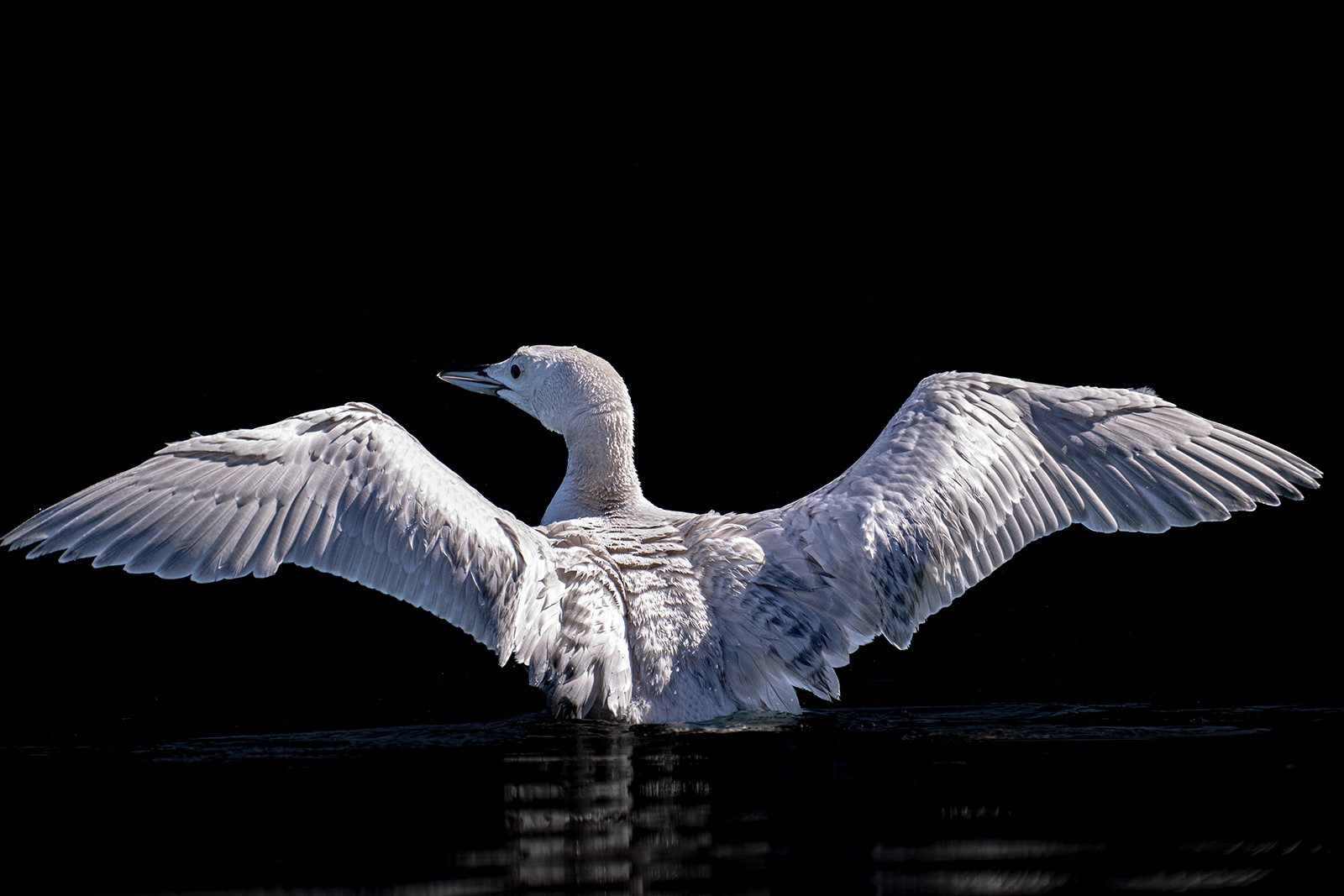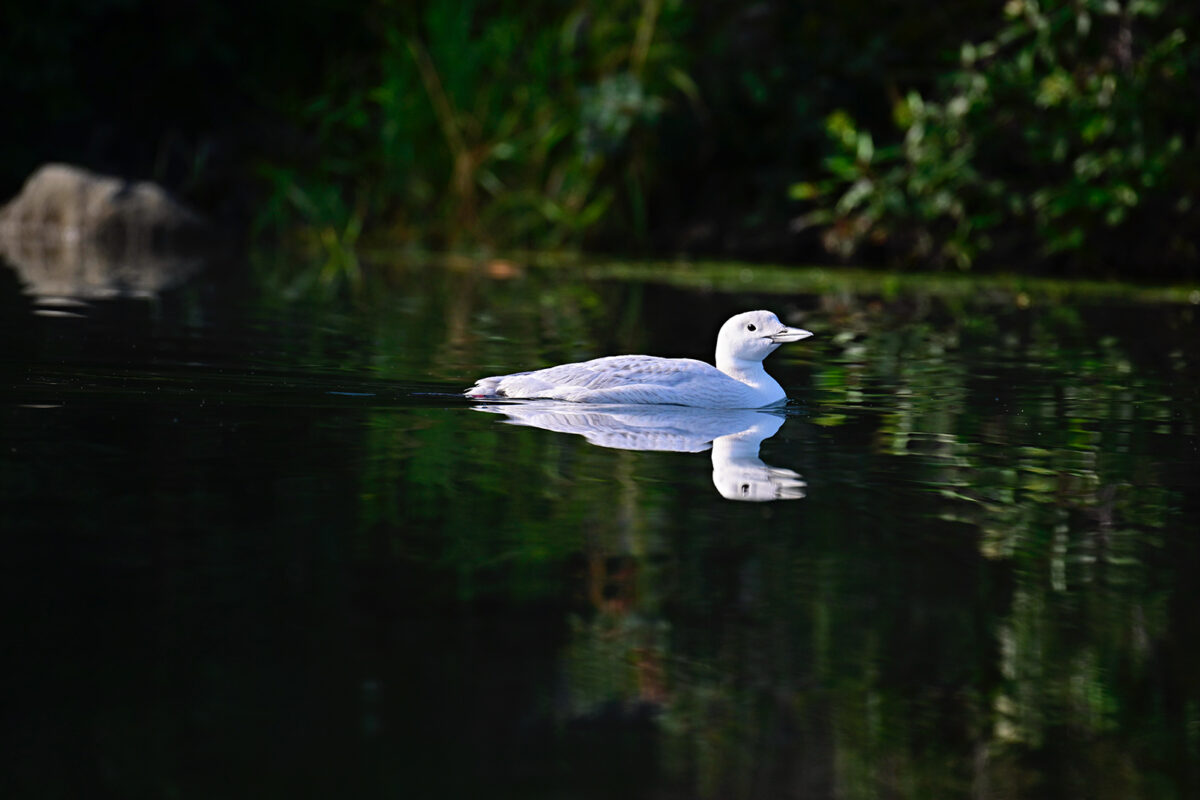Once in a White Loon: Audubon Features Whitefish Photographer’s Images of White-feathered Loon
Over three months, Tony Gangemi went to a local lake every other day after his graveyard shift with the city of Whitefish to photograph the rare bird
By Lauren Frick
Tony Gangemi has captured a variety of subjects in his roughly four decades as a photographer. For the last seven years, his lens’ focus has been birds, with birds of prey offering him a particularly intriguing challenge.
“It’s a challenge to get them in flight; to make sure that everything’s in focus,” Gangemi said. “Just a challenge of an osprey catching a fish on the water. It’s impressive to watch.
“It’s my therapy. I can go out and spend four hours just shooting birds and then watching their instincts or their daily habits.”
Typically, Gangemi enjoys bringing people along on his shoots, giving them a chance to see the magic before the still.
But when he caught a glimpse of a young Common Loon that ended up being anything but, Gangemi wasn’t looking to ruffle any feathers.
“Normally, I will tell people where I’m going or invite them along, but this was an opportunity where you would have every photographer in the world shooting because it’s so rare,” Gangemi said. “Photographers know that this is a once-in-a-lifetime thing.”
That glimpse sparked Gangemi’s 10,000-image journey documenting what he thought to be an albino Common Loon from one-week-old until three months when it migrated away from the Whitefish area — a journey that ultimately landed him and the photos of the rare bird in Audubon.
“I was in tears when it first came out,” Gangemi said. “I just didn’t know what to expect, and the article is not written just about the loons. It’s also written about me. I was pleased, but I was shocked.”

Initially thought to be albino, the bird over the first few weeks of its life developed a shadowy outline of its parents’ intricate patterning, which signaled that the loon was actually leucistic, meaning its feathers lacked most, but not all, of their normal black pigment.
“I was clued in on this loon right off the bat,” Gangemi said. “I mean I’ve been out shooting loons for years. I’m waiting for the babies because I really enjoy them riding on the backs and getting that shot.
“I knew that this was gonna go somewhere because I knew how rare this bird was.”
Gangemi decided the rare bird needed to be kept secret for its protection and to maintain the privacy of the residents on the lake, so his summer on the water was one of solitude.
This solace, however, is nothing new to Gangemi, who has worked from 2 a.m. to 10 a.m. in maintenance for the city of Whitefish for the last five years. The schedule proved ideal for chronicling the loon’s growth, with Gangemi going to the lake for three to four hours every other day after work.
Whether it’s floating in a still lake waiting to catch a moment of flight or waking up in the early hours to capture the best flints of the Northern Lights, Gangemi has always relished his quiet time in nature, he said.
“It’s therapy for me as far as getting out and shooting the photos,” Gangemi said. “I can just do my thing and enjoy being out in nature, not really having to think about stuff other than getting that shot.”

While his surroundings may have been void of human contact, Gangemi wasn’t completely alone. After spending about 300 hours together at the lake, Gangemi felt connected to the rare loon and its family.
The loons, however, may still be on the fence, he said.
“They saw me out there every day, but they still didn’t want me too close,” he said.
“They will pop up right next to you because they can swim for quite a long ways underwater and they will, if they’re pissed, they will let you know you’re too close and you need to back off. I’ve had one of the adults fly all the way across the lake because he knew that I was interrupting some time with either the mom or the dad and the babies or fly right next to the boat and just land and start squawking their call, which is really cool. I love that call.
“But yeah, there were times where I was too close … but then I would just back off and go and park the boat and call it a day.”
Around the age of 3 or 4, Common Loons typically return to the place they were born to breed for the first time, according to Audubon. The Montana Department of Fish, Wildlife and Parks tagged the leucistic loon, so scientists will know if and when it comes back. Since leucism is a genetic condition, there’s a good chance that if the loon returns, its offspring could sport the same ghostly feathers.
Despite a more distant relationship with the white loon, Gangemi is hopeful to spot the rare bird again, he said.
“I’m definitely gonna search it out,” Gangemi said. “I’ve been to all the lakes around here and the majority of the lakes have loons on them in the early season. I know where to go; where to look.
“But it’s also educating the public during nesting season to stay away from the nesting areas; like fishing, if they swallow any lead, it can kill them. Things like that.”